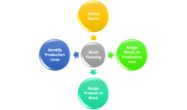SAP APO
Filter By
Browse By
- SAP Analytics and AI
- SAP Application Development and Integration
- All SAP Application Development and Integration
- SAP ABAP
- SAP ABAP Development Tools
- SAP ABAP Test Cockpit
- SAP API Management
- SAP BAPI
- SAP Basis
- SAP BRF
- SAP Business Application Studio
- SAP CMS
- SAP Design Studio
- SAP Development Tools
- SAP DevOps
- SAP EAI
- SAP EDI
- SAP Extension Suite
- SAP Fiori
- SAP Fiori Elements
- SAP Integration Suite
- SAP Low Code Application Development
- SAP Low Code Automation
- SAP Netweaver
- SAP Release Management
- SAP UI5
- SAP Web Application Server
- SAP Web IDE
- SAP Business Process Management
- SAP Center of Excellence
- SAP CIO
- SAP Customer Experience
- SAP Data and Data Management
- All SAP Data and Data Management
- SAP BW
- SAP BW/4HANA
- SAP Crystal Reporting
- SAP Data Archiving
- SAP Data Center
- SAP Data Governance
- SAP Data Integration
- SAP Data Migration
- SAP Data Quality
- SAP Data Services
- SAP Data Strategy
- SAP Data Visualization
- SAP Data Warehouse Cloud
- SAP DMS
- SAP Document Control
- SAP EIM
- SAP ETL
- SAP ETL Tools
- SAP HANA
- SAP HANA Administration
- SAP HANA Deployment Infrastructure
- SAP HANA Studio
- SAP Master Data
- SAP Master Data Governance
- SAP MDM
- SAP Enterprise Architect
- SAP Enterprise Asset Management
- SAP ERP
- SAP Finance
- All SAP Finance
- SAP Accounting
- SAP AR AP
- SAP Asset Accounting
- SAP Billing Systems
- SAP BPC
- SAP BRIM
- SAP Cash Management
- SAP Central Finance
- SAP Controlling
- SAP COPA
- SAP Cost Center Accounting
- SAP e-invoicing
- SAP FICO
- SAP Finance Automation
- SAP Financial Closing Cockpit
- SAP Financial Consolidation
- SAP Financial Planning
- SAP FX Risk
- SAP General Ledger
- SAP Global Tax Management
- SAP Hyperion
- SAP Order to Cash
- SAP Payment Processing
- SAP Profitability Analysis
- SAP Rebate Management
- SAP S/4HANA Finance
- SAP Universal Journal
- SAP Governance Risk and Compliance
- SAP Human Capital Management
- SAP Intelligent Technologies
- SAP Platform and Technology
- All SAP Platform and Technology
- SAP Business Technology Platform
- SAP Cloud Connector
- SAP Cloud Integration Platform
- SAP Cloud Migration
- SAP Cloud Platform
- SAP Cloud Providers
- SAP Cloud Strategy
- SAP Container Platform
- SAP Digital Asset Management
- SAP Digital Integration Hub
- SAP Digital Signature
- SAP HANA Enterprise Cloud
- SAP HEC
- SAP Hyperscalers
- SAP Infrastructure
- SAP Messaging
- SAP Smart Forms
- SAP Quality and Testing
- SAP Security
- SAP Spend Management
- SAP Supply Chain Management
- All SAP Supply Chain Management
- SAP APO
- SAP Asset Management
- SAP Business Network
- SAP Digital Manufacturing Cloud
- SAP Digital Twin
- SAP EWM
- SAP IBP
- SAP Inventory Management
- SAP Label Printing
- SAP Logistics
- SAP Manufacturing
- SAP Manufacturing Automation
- SAP MES
- SAP MII
- SAP MM
- SAP MRO
- SAP MRP
- SAP Order Management
- SAP Plant Maintenance
- SAP PLM
- SAP Production Planning
- SAP S&OP
- SAP SD
- SAP SPM
- SAP Supply Chain Planning
- SAP Track and Trace
- SAP Transportation Management
- SAP System Administration
Supply Chain Management: SAP APO
We are encountering endless advancements in technology and increasing levels of globalization. Businesses are now competing in an unpredictable world. Consumer shopping habits are changing, making sales and operational planning both highly important and challenging. It is important to keep modernizing to get ahead of your competition.
What is SAP APO?
SAP APO stands for Advanced Planner and Optimizer. It is a component complementing the SAP ERP Central Component (ECC) logistics and supply chain processes, like procurement, production, and sales. SAP APO is designed to improve the availability of products, putting customers at the center of the process.
SAP APO has four key capabilities:
- Demand Planning (DP). Analyze sales, consumer trends, historical patterns, and seasonality data to optimize your ability to meet your consumer demand most efficiently.
- Supply Network Planning (SNP). Focused on reducing inventory, safety stock management, and having a realistic supply plan. It supports hierarchical data structures with capabilities to consolidate data into families, versus combing extensive data for individual SKU’s, plants, or warehouses.
- Production Planning and Detail Scheduling (PPDS). Used for creating procurement proposals for in-house production or external procurement to cover product requirements. PPDS covers demand, excess inventory, resource planning, production monitoring, and modifications to the plan.
- Global Available to Promise (GATP). A module that searches to determine if product is available at specific times, and for quantities that satisfy the customer demand. The module works to optimize your customer demand fill rates.
Benefits of an SAP APO implementation are:
- Improvement in profit margins
- Reduced purchasing costs
- Reduced production and logistics costs
- Improved inventory management
- Improved management.
Technical resource partners for consideration might be – SAP, Gib, or Reveal.
Key considerations for SAPinsiders are:
Supply Chain Management: SAP APO
We are encountering endless advancements in technology and increasing levels of globalization. Businesses are now competing in an unpredictable world. Consumer shopping habits are changing, making sales and operational planning both highly important and challenging. It is important to keep modernizing to get ahead of your competition.
What is SAP APO?
SAP APO stands for Advanced Planner and Optimizer. It is a component complementing the SAP ERP Central Component (ECC) logistics and supply chain processes, like procurement, production, and sales. SAP APO is designed to improve the availability of products, putting customers at the center of the process.
SAP APO has four key capabilities:
- Demand Planning (DP). Analyze sales, consumer trends, historical patterns, and seasonality data to optimize your ability to meet your consumer demand most efficiently.
- Supply Network Planning (SNP). Focused on reducing inventory, safety stock management, and having a realistic supply plan. It supports hierarchical data structures with capabilities to consolidate data into families, versus combing extensive data for individual SKU’s, plants, or warehouses.
- Production Planning and Detail Scheduling (PPDS). Used for creating procurement proposals for in-house production or external procurement to cover product requirements. PPDS covers demand, excess inventory, resource planning, production monitoring, and modifications to the plan.
- Global Available to Promise (GATP). A module that searches to determine if product is available at specific times, and for quantities that satisfy the customer demand. The module works to optimize your customer demand fill rates.
Benefits of an SAP APO implementation are:
- Improvement in profit margins
- Reduced purchasing costs
- Reduced production and logistics costs
- Improved inventory management
- Improved management.
Technical resource partners for consideration might be – SAP, Gib, or Reveal.
Key considerations for SAPinsiders are:
- Leverage collaborative demand planning with APO. Anjali Butley is a business analyst with over 18 years of SAP experience in design and development of integrated supply chain solutions. Read her article on the benefits of developing an accurate demand plan with better communication, transparency, and quick decision-making.
- Address planning and scheduling challenges with APO industry extensions. Rajesh Raycurrently leads the SAP SCM product area at IBM Global Business Services. Read his insights to address the planning and scheduling challenges faced by the auto and retail industries.
- Manage promotions planning in SAP APO. Alok Jaiswal, is a consultant at Infosys Limited and has more than six years of experience in IT and ERP in supply chain. See his example of how promotional planning can be configured into SAP APO, which helps you improve forecast accuracy.
27 results
-

Brüggen Leverages Old with New for Forecast Optimization
Published: 28/October/2021
Reading time: 10 mins
H. & J. Brüggen KG (Brüggen), a family-owned, privately held company in Lübeck, Germany, that produces private label cereals and muesli bars, underwent a supply chain management transformation that began in 2008 and continues to evolve as the company expands its product offerings and global reach. Martin Gries, Head of Supply Chain for Brüggen, says…
-

Enterprise-Class Demand Planning at Agilent Technologies
Published: 30/July/2021
Reading time: 6 mins
For Agilent Technologies, a manufacturer of analytical instruments for the life science and laboratories sector, growth has been dramatic over recent years, including a number of acquisitions. Such growth has caused the company’s pathology division to experience a rapid expansion of sales, but also revealed that the division had outgrown its demand planning practices, which…
-

Leverage SAP S/4HANA – PPDS Block Planning Functionality to Optimize Production Schedule Considering High Priority Customer Anticipated Demand
Published: 05/April/2021
Reading time: 6 mins
As supply chains evolve in complexity, manufacturing processes are becoming more complex as well. Evolving customer demands, proliferating SKU portfolios, increasing product design complexities, and the need to reduce manufacturing cycle time, are all adding to the complexities in the manufacturing world. A typical plant today manufactures a wide gamut of products, sometimes leveraging the…
-
-

- SAP APO
 Premium
Premium
A Comparison of Production Planning and Scheduling functionality on SAP S/4HANA vs. SAP APO
This session provides key criteria to differentiate between production planning and scheduling functionality delivered in SAP S/4HANA and SAP APO. Discuss the key changes, similarities, and differences between SAP S/4HANA and SAP APO and how these changes affect your supply chain. Explore different landscape options for customers who want PPDS functionality. Attend this session to:…
-

How to Setup Demand Planning in SAP Advanced Planning and Optimization
Published: 21/May/2020
Reading time: 21 mins
SAP Advanced Planning and Optimization, demand planning allows a business to perform forecasting of their materials while considering all the factors that affect the demand. Demand planning is periodic and contains multi-step processes such as data gathering, statistical analysis, reviewing market intelligence reports, and performing adjustments against budgeted forecast to drive material requirements planning. SAP…
-

Demand Sensing Improves Short-Term Demand Forecasting at Arla Foods
Published: 19/November/2019
Reading time: 5 mins
Most organizations today are somewhere along the journey toward becoming a digital business, with meeting high expectations for the customer experience a central driver. One of the keys to creating an exceptional experience is the ability to access data in back-end systems in real time, which means that robust integration is critical. This article introduces…
-

Logistics and SCM: Case study: Building a stable supply plan — See how Hollister reengineered a capacity planning solution without an engine and still managed to drive success
Published: 05/March/2019
Reading time: 1 mins
Learn how the Hollister expanded the standard capacity-leveling algorithm to include additional parameter checks in its system. SCM2017_Syed_Grace_Casestudybuildingastable Azeemullah Syed If you have comments about this article or publication, or would like to submit an article idea, please contact the editor. Steve Grace If you have comments about this article or publication, or would like...…
-
-

Not Your Same Old Advanced Planning System Implementation!
Published: 01/September/2018
Reading time: 18 mins
Panelists: Robert Birdsall and Ryan Rickard, SCMO2 Date: September 6 Sponsor: IBP Bootcamp and SCM 2018 Gone are the days of engaging a System Integrator and waiting nine to twelve months for the first in a series of rollouts. With today’s cloud platform, and specifically SAP Integrated Business Planning (SAP IBP), the platform is upgraded…
-

Optimize Your Supply Chain with SAP Solutions
Published: 01/October/2017
Reading time: 9 mins
Panelists: Martin Rowan and David Carroll Date: Wednesday, October 4 Are you leveraging all the capabilities in your existing SAP systems to optimize your supply chain? Whether you are trying to minimize inventory levels, improve service performance, reduce stock-outs, or all the above, there is likely functionality you are not using. Plus, you likely need to prepare…
-

Carry Out Planning for Production Replenishment Using the Supply-to-Production Process
Published: 28/September/2017
Reading time: 14 mins
Learn the configuration, master data setup, and process flow for the supply-to-production process to replenish the components from a warehouse to production supply areas. Key Concept The supply-to-production process is used to organize the physical replenishment of components for production. It is generally used in the short-term horizon and uses a control cycle and supply...…
Become a Member
Unlimited access to thousands of resources for SAP-specific expertise that can only be found here.
Related Vendors
Your request has been successfully sent

